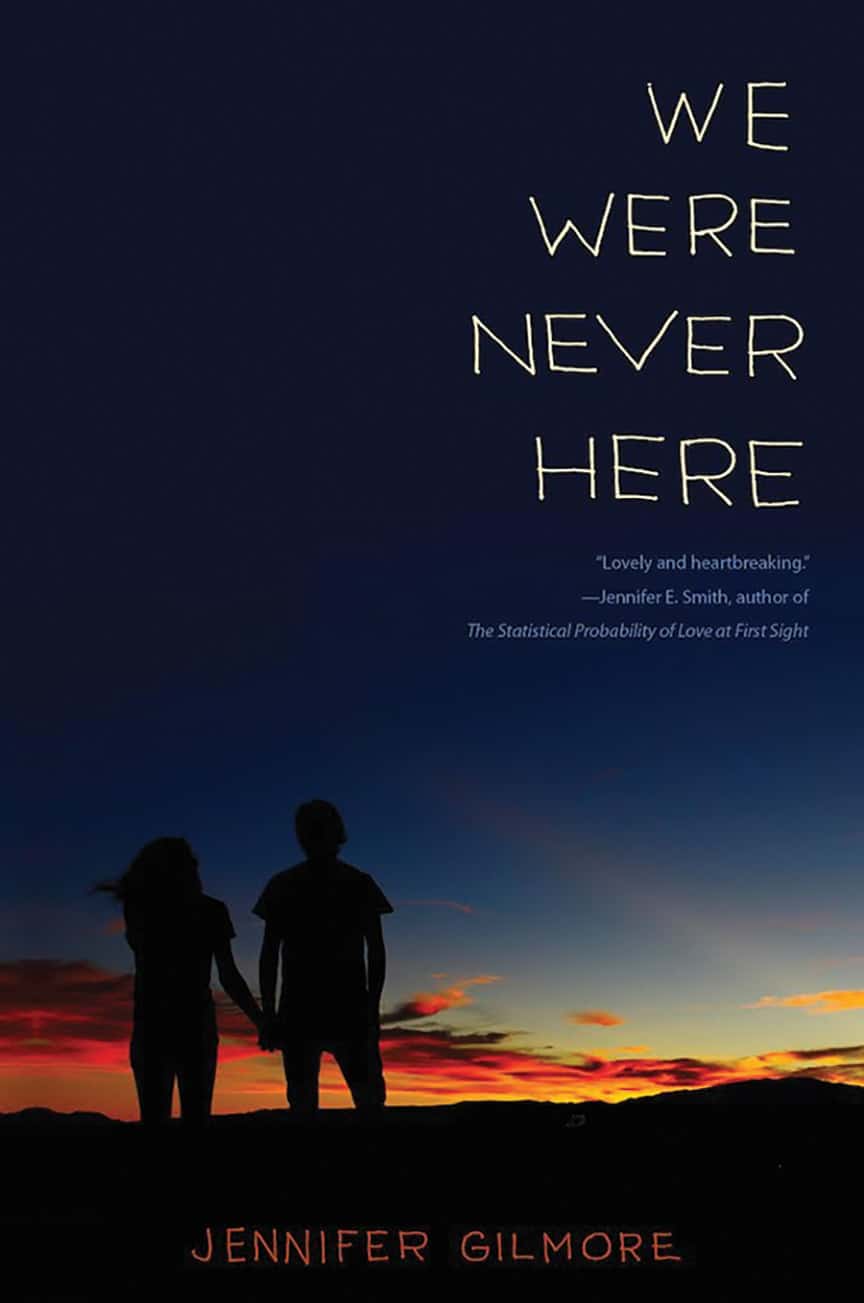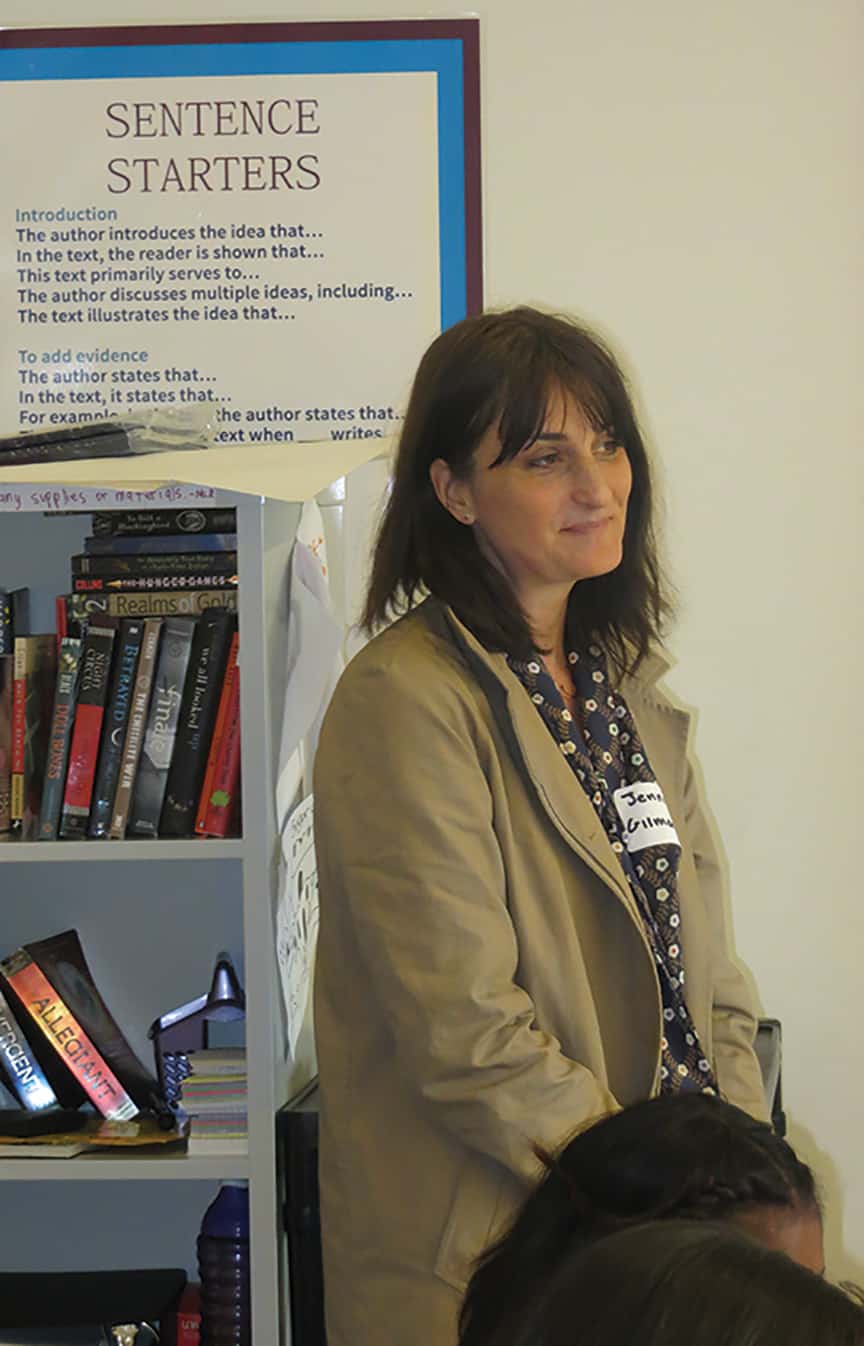We Were Never Here tells the story of a teenage girl with a stigmatized disease
Being 16 is already difficult, let alone being 16 with a devastating disease with a shameful stigma.
In her upcoming novel We Were Never Here, renowned Carroll Gardens author Jennifer Gilmore tells the fictional story of Lizzie, a 16-year-old girl who is hospitalized with ulcerative colitis: a potentially life-threatening inflammatory bowel disease related to Crohn’s disease.
Gilmore herself developed ulcerative colitis at age 25, and underwent three difficult surgeries and endless hospital time to cure it. Back then, she had a hard time talking about it.
“There’s so much shame in that disease. It felt embarrassing,” said Gilmore, who has since managed her symptoms. “But over 5 million people have it, and it’s not talked about.”
We Were Never Here isn’t just a nod to an often-ignored disease, however. It’s a love story: Lizzie meets a young hospital volunteer named Connor and falls for him the only way a 16-year-old can – hard. Amidst all of Lizzie’s health problems, Connor reveals some pretty dark secrets about himself, sending the teens into a precarious relationship filled with shifting power dynamics.
The book comes out June 14 on HarperTeen. Gilmore will conduct a reading at BookCourt in Cobble Hill.
We Were Never Here marks Gilmore’s first official foray into young adult novel writing. After receiving positive feedback about a 16-year-old protagonist in her 2010 novel Something Red, Gilmore decided to pursue YA more aggressively. Theoretically, the book is geared toward high school and college students – but the line between young adult and adult literature is ever-blurring.
In fact, 55% of YA readers are adults.
What makes this novel truly YA is that it is told through a teen’s perspective – not an adult’s perspective with hindsight, but a teen’s perspective that is truly experiencing adolescence for the first time.
“I’m dangerously still in touch with my inner 16-year-old. I feel like I’m writing about my previous self,” she said. “When you’re 16, everything feels really important. Everything is going to end right then and there. You think you’ll never love again. There’s an emotional openness that makes you distinctly 16.”

Throughout her illustrious career – which includes four novels, multiple awards, teaching residencies at the likes of Harvard and Barnard, and essays in the New York Times, New York Magazine,
The Atlantic and more – Gilmore has drawn from her own life to feed her fiction.
In her 2013 book The Mothers, Gilmore wrote about adoption through the lens of fictional characters, while she, in reality, was trying to adopt a child with her husband Pedro Barbeito, a renowned painter. The harrowing real-life journey forced her to meet eight birth mothers and endure countless disappointments, including a puzzling emotional scam wherein the birth mother wasn’t even pregnant. Now, Gilmore is the proud mom of a 3-year-old adopted son.
“I thought motherhood would never happen for me because I’d been sick. I just went down this rabbit hole,” Gilmore said. “My son is a wonder baby to us. We’re very lucky.”
Gilmore is originally from the Washington DC area. She attended Brandeis University, then spent some time in Seattle working as a bartender and radio host. After earning an MFA at Cornell University in 1997, she moved to her permanent home: Brooklyn. Through it all, she wrote short stories, but her combined work seemed to be leading to something bigger.
In 2007, she debuted with the novel Golden Country, a story about three early 20th Century Jewish immigrants trying to follow their dreams. It became a New York Times Notable Book, and a finalist for the Los Angeles Times Book Prize. Her subsequent novels Something Red and The Mothers earned glowing reviews.
Of course, having a kid makes it tougher to write. Her Carroll Gardens apartment used to be her workspace, but these days she writes at Brooklyn Writers Space on 1st Street, a quiet co-working space founded by playwrights.
“Even without children, I needed to fight to write. Now I have to fight more than ever,” she said.
Given her current lineup, however, it’s hard to believe she has any trouble writing at all. While promoting We Were Never Here, Gilmore is working on an adult novel about Greece, the native country of her husband. She’s also working on a YA novel about adoption from a birth mother’s perspective, as well as a screenplay about life in the DC area. Meanwhile, The Mothers has been optioned for a film starring Academy Award-winning actress Rachel Weisz.
With We Were Never Here, however, she faced a special kind of hurdle.
“I’m really far away from the story of being sick right now,” she said. “I know what being sick has done, but to write this, I had to go back into that time when I had no wisdom. I knew it would be a great story for a 16-year-old. It’s already a weird time, your body is changing, you’re adjusting to becoming a woman … [the book] is about how illness really does change you – not always for the worse.”
We Were Never Herewill be available on HarperTeen beginning June 14. A reading will take place on June 18 at BookCourt, 163 Court Street, at 7 pm.








